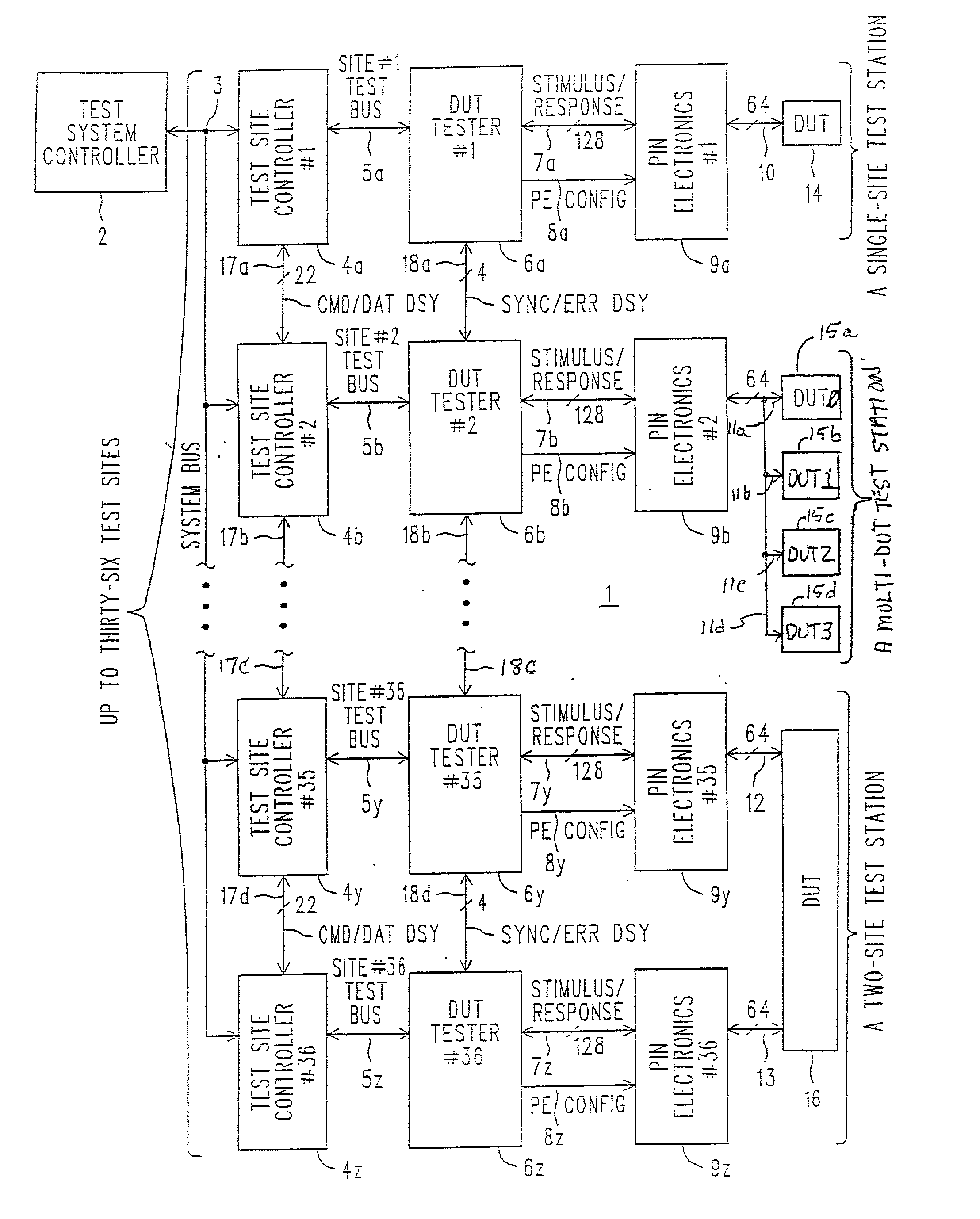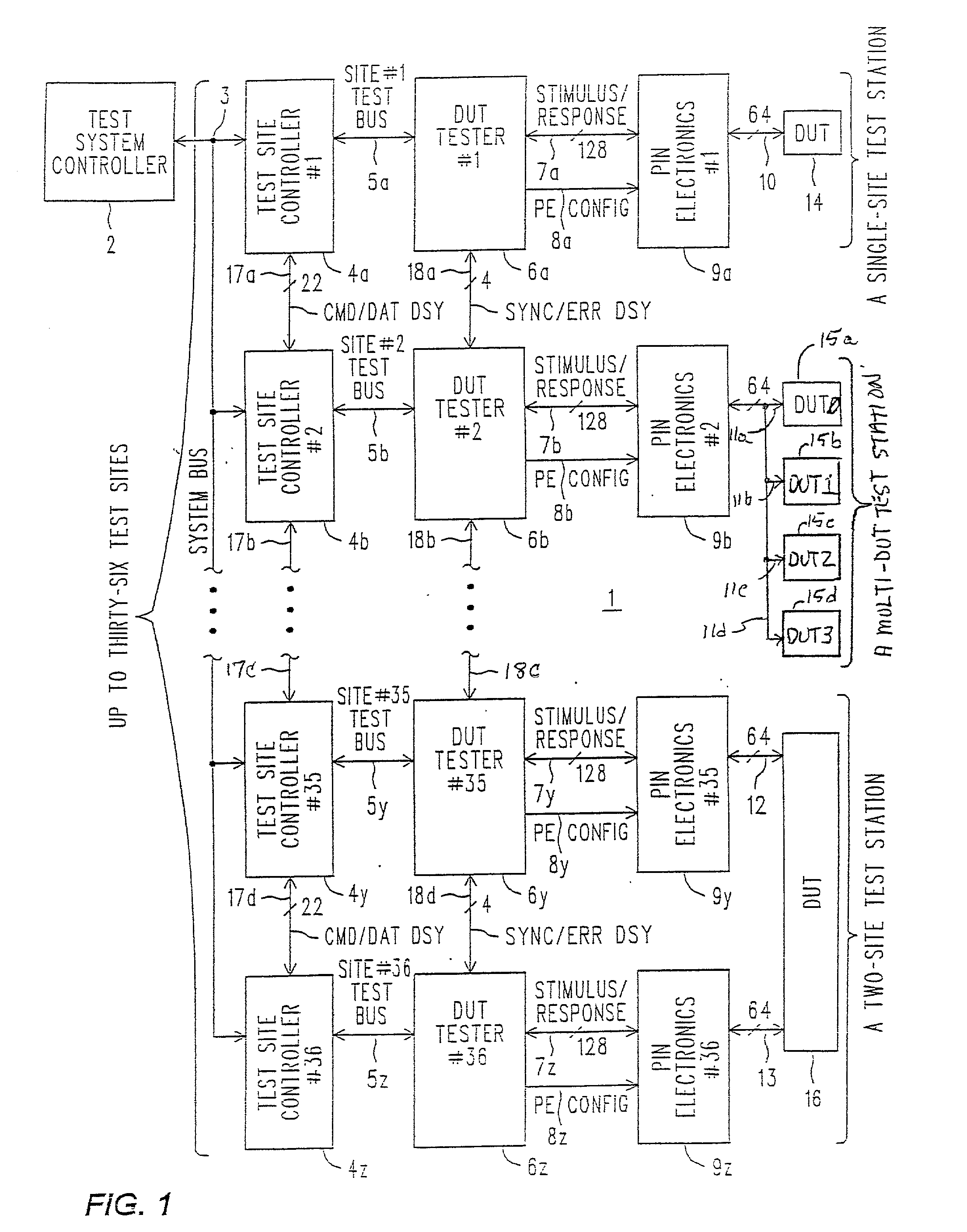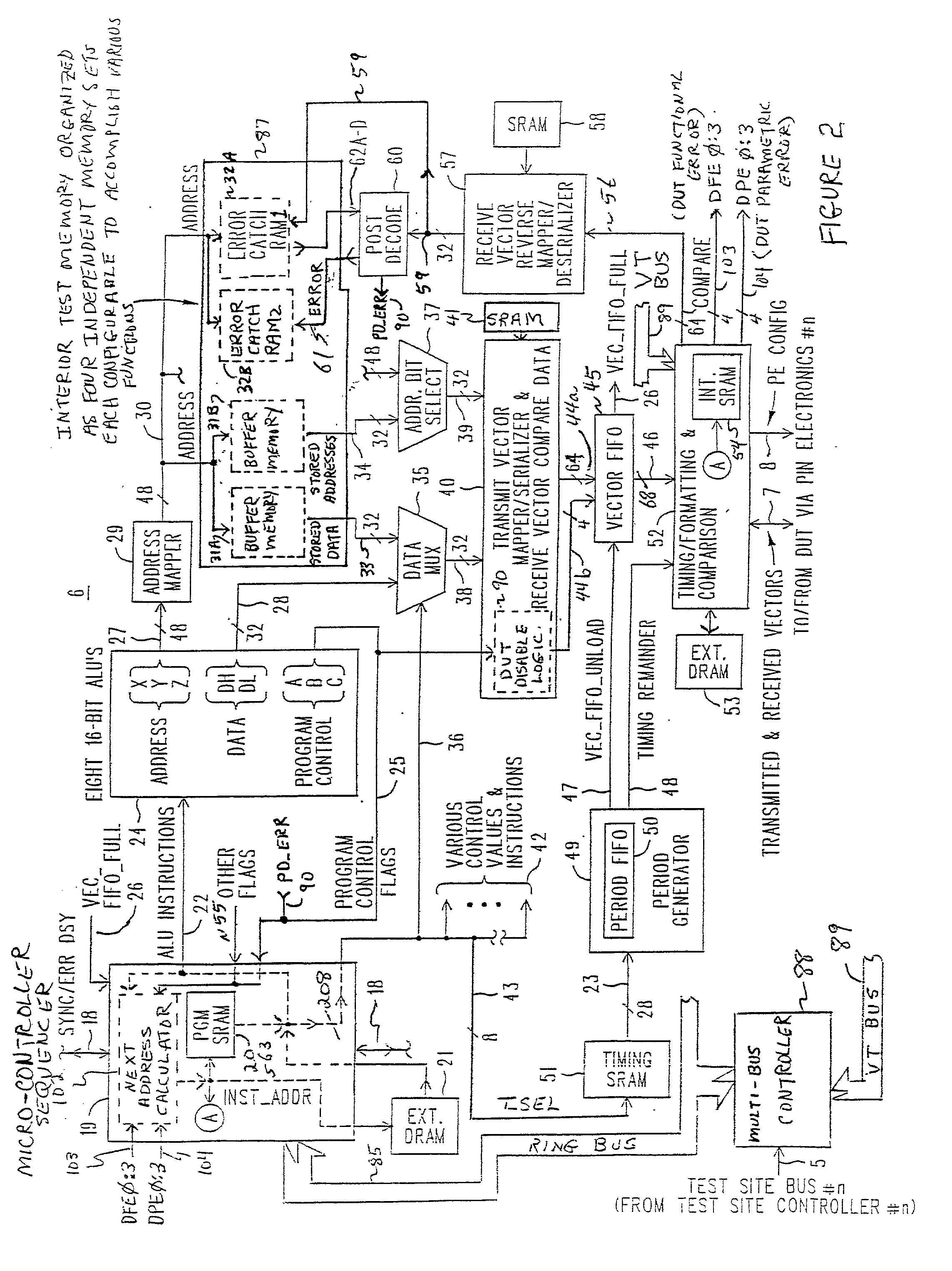Algorithmically programmable memory tester with history FIFO's that aid in ERROR analysis and recovery
a memory tester and history fifo technology, applied in the field of algorithmically programmable memory testers, can solve the problems of difficult to determine the exact circumstances that were associated, arbitrarily advance, and loss of desired correspondence, and achieve the effect of prolonging the overhead needed to implement a history fifo
- Summary
- Abstract
- Description
- Claims
- Application Information
AI Technical Summary
Problems solved by technology
Method used
Image
Examples
Embodiment Construction
[0034] Refer now to FIG. 1, wherein is shown a simplified block diagram 1 of a Non-Volatile Memory Test System constructed in accordance with the principles of the invention. In particular, the system shown can simultaneously test, with as many as sixty-four test points each, up to thirty-six individual DUT's (Devices Under Test) at one time, with provisions for reconfiguration to allow elements of a collection of test resources to be bonded together to test DUT's having more than sixty-four test points. These test points may be locations on a portion of an integrated circuit wafer that has not yet been diced and packaged, or they might be the pins of a packaged part. The term "test point" refers to an electrical location where a signal may be applied (e.g., power supplies, clocks, data inputs) or where a signal can be measured (e.g., a data output). We shall follow the industry custom of referring to the test points as "channels". The "collection of test resources to be bonded toge...
PUM
 Login to View More
Login to View More Abstract
Description
Claims
Application Information
 Login to View More
Login to View More - R&D
- Intellectual Property
- Life Sciences
- Materials
- Tech Scout
- Unparalleled Data Quality
- Higher Quality Content
- 60% Fewer Hallucinations
Browse by: Latest US Patents, China's latest patents, Technical Efficacy Thesaurus, Application Domain, Technology Topic, Popular Technical Reports.
© 2025 PatSnap. All rights reserved.Legal|Privacy policy|Modern Slavery Act Transparency Statement|Sitemap|About US| Contact US: help@patsnap.com



